In this Article:
Many gun owners choose to own a gun in .40 S&W because of its power. This caliber is perfect for both self-defense and target practice. To get the most out of your rounds, you need to use the best .40 S&W ammo. Lucky for you, we’ve reviewed some of the best options on the market. Keep reading to find the right round for you.
History of the .40 S&W Cartridge
In 1986, two FBI agents were killed and five more wounded in what became known as the Miami shootout. It was after this that the FBI decided to replace its agents’ revolvers with semi-automatic pistols. The reasoning was that the semiauto’s magazine held more ammo than the six in the revolver’s cylinder and was easier to reload under stress. As a result, the agency looked to replace their .38 Special +P loading (a 158-grain lead semi-wadcutter) with an equivalent load that would function in an autoloader.
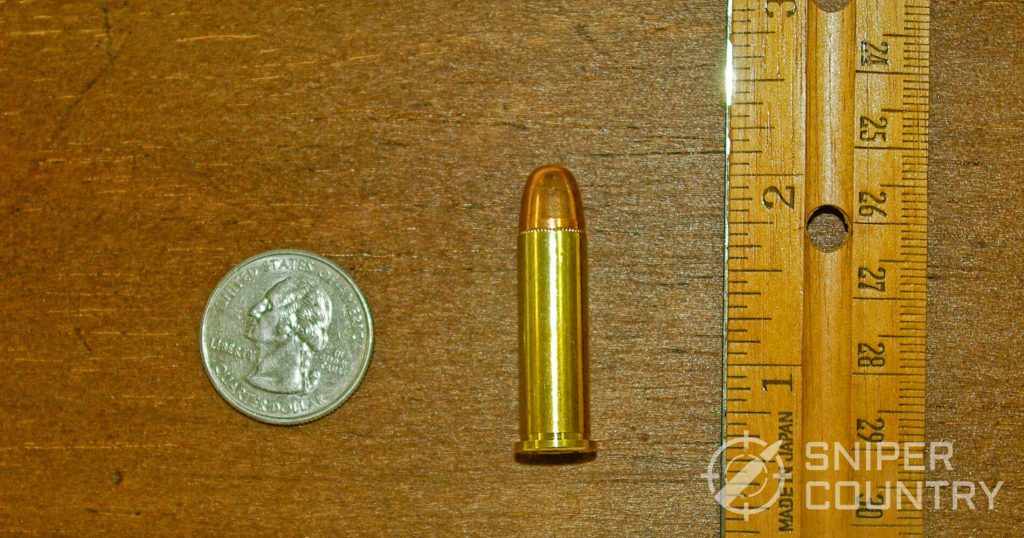
Testing commenced of 9mm and .45 ACP loads, with John Hall (Special Agent in charge of the FBI’s Firearms Training Unit) running the tests. He decided to include his own 10mm Colt Delta Elite in the testing, firing his hand-loaded ammunition for comparison. Tests revealed that a 10mm 170-180 grain bullet fired at 900-1000 fps gave the terminal performance the FBI desired. The full-blown 10mm’s 1300-1400 fps with the same bullet was deemed too much of a good thing, so the FBI turned to Smith and Wesson for help.
S&W and Winchester
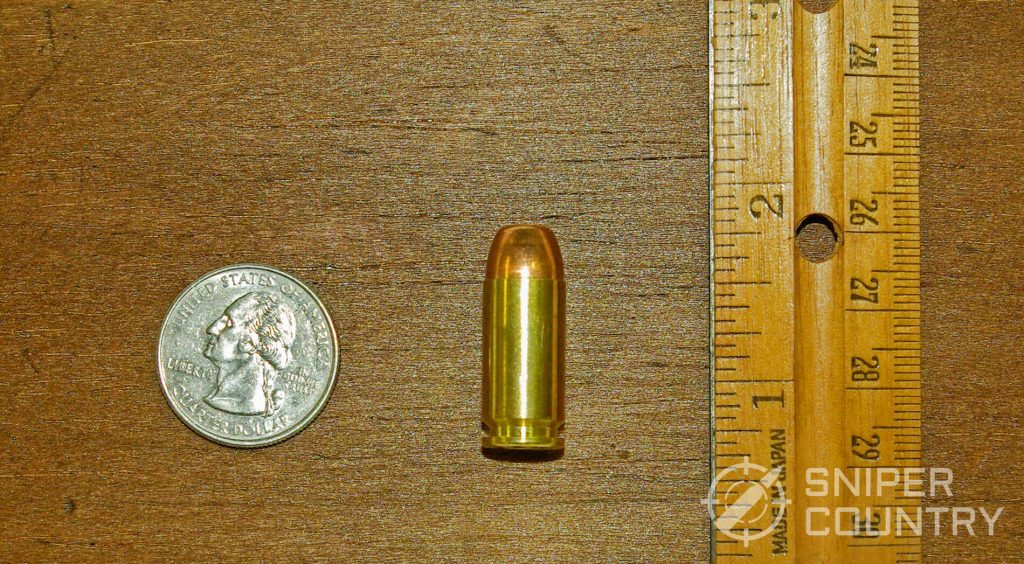
The FBI wanted S&W to adapt their large-frame 4506 pistols to fire their downloaded 10mm round. S&W figured out that with less powder and more air space in the big 10mm case, a shorter case might fit the FBI’s requirement and also function in existing 9mm-size guns.
With less airspace in the case, the powder burned more efficiently and produced velocities that satisfied the F.B.I. S&W partnered with Winchester to produce this new cartridge, called the .40 S&W. At any rate, the developmental period was over.
On January 17, 1990 the new cartridge was introduced to the public along with S&W’s new pistol that fired it — the 4006. It took them several months to actually get the pistol to dealers, during which time Glock beat them to market with their Models 22 and 23.
These guns had been announced one week before the S&W gun. (Since Glock already produced 10mm pistols, they had a relatively easy time adapting their 10mm design to fire the shorter .40 S&W which allowed them to beat S&W guns to dealers’ shelves. Both cartridges use the same bore diameter and case head which shortened R&D time).
The Glock guns were very popular, and the FBI adopted the Glock and its .40 S&W round in 1997. The .40 S&W’s popularity was enhanced by the now-expired Federal Assault Weapons Ban in 1994. This act, among other things, limited magazine size to ten rounds. Folks figured out that if they could only carry ten rounds, the larger .40 S&W might be more effective than the smaller 9mm.
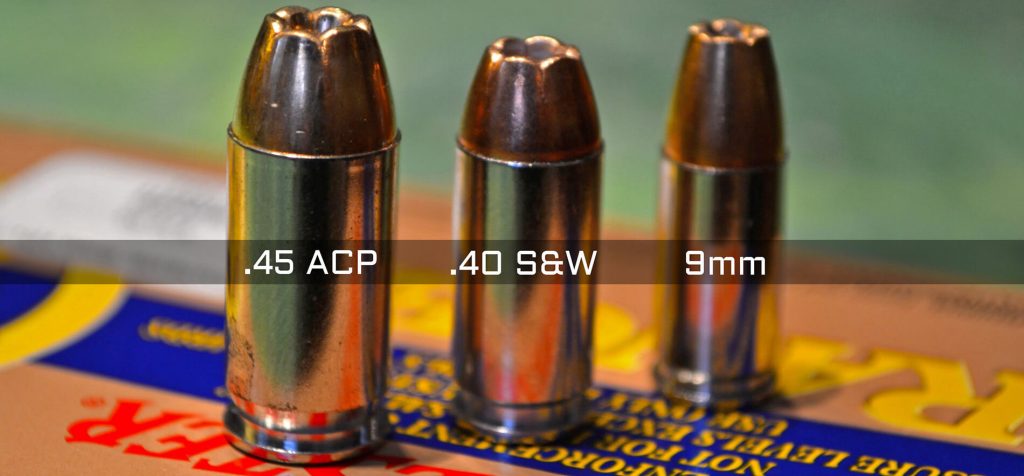
Numerous police agencies jumped on the .40 S&W bandwagon and the round grew immensely in popularity. With pressures similar to the 9mm’s (35,000 pounds per square inch) and superior to the .45 ACP’s (21,000 lbs/PSI), some have called the .40 S&W the ideal cartridge for personal defense and law enforcement. Whatever your stance on that, it has certainly been tested and proven.
BONUS OFFER: Get your free shooting range targets to print at home!
Get your free targets to print at home!
FMJ vs. JHP and Other Things You Should Know
With the cartridge’s history behind us, let’s talk about the ammo itself. I will break it down into two main groups, as I have done with other ammo articles I’ve written. We will talk first about practice ammo, then will tackle self-defense rounds.
First, a quick explanation of the difference between the two. Practice ammo usually uses full metal jacket (FMJ) bullets, while self-defense rounds normally utilize jacketed hollow point (JHP) bullets that expand when they hit the target.
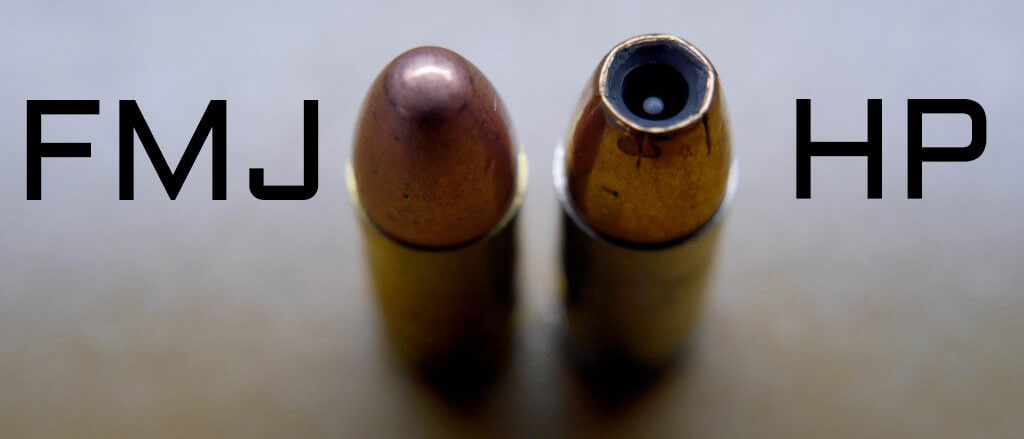
Why not just use your self-defense JHP ammo all the time? Unless you’re a famous gun writer or a YouTube personality who is supplied by ammo companies, it would cost a whole lot more to do that.
Most FMJ target-type ammo is cheaper to make than JHP ammo since the bullets cost less to produce. If you match your bullet weights and relative velocities (say, 180-grain JHP and 180-grain FMJ at 900 fps), you should have no problems practicing with the two different types.
Why Match Bullet Weights and Velocities?
Let’s say you’re shooting a 165-grain JHP and a 200-grain FMJ at 900 fps. With the velocities the same, the heavier bullet will strike higher on the target than the lighter one.
This is because the heavier bullet generates more recoil, which lifts the barrel higher than the lighter bullet. The lighter bullet exits the muzzle before the barrel has a chance to rise as much. A lighter-recoiling bullet doesn’t cause the muzzle to rise as much as a heavier-recoiling one, velocities being equal or close.
The rule of thumb is that a faster bullet exits the muzzle quicker because the barrel doesn’t have the chance to rise as much as when firing a slower bullet.
FMJ Ammo
Best .40 S&W Ammo: Magtech 180 Grain FMJ Flat Nose
Specs: 990 fps, 392 ft/lbs energy
Magtech is a huge international company that manufactures ammunition under different labels, in different countries. It is a member of CBC Global Ammunition, a holding company that operates ammunition factories in the U.S., Brazil, Germany and the Czech Republic. (Another of CBC Global’s labels that we see on a lot of ammunition boxes in local stores is Seller & Bellot). CBC’s products are exported to over 130 countries, which makes this company one of the largest in the world. What’s that got to do with our look at the Magtech .40 S&W FMJ round? Simple — cost. They make everything connected with their ammo production, which tends to hold costs down.
I’ve shot Magtech ammo in various calibers and find it works as advertised. You can buy it in bulk or in boxes of 50. The flat nose helps in that it is just flat enough to cut nice holes in a paper target without being too truncated which might interfere with reliability.
If you are looking for a lesser-expensive practice round, give the Magtech a try — they make good stuff.
Popular Articles
Best .40 S&W Ammo: PMC 180 Grain FMJ Flat Nose
Specs: 985 fps, 388 ft/lbs energy
PMC, a South Korean company, manufactures all kinds of different ammunition from small arms to artillery shells. The company was founded in 1968 and is a large supplier of ammunition to not only the South Korean military but to civilian shooters around the world. I chose this brand because it’s a well-made .40 S&W cartridge that is reliable, accurate and reloadable.
PMC, like Magtech and other manufacturers, use a flat-point FMJ bullet instead of a round-nose. The old .45 ACP started out life using first a 200-grain, then a 230-grain round-nose bullet, which became the standard.
The PMC round feeds well and makes for some really good practice ammo. Reviews about this ammo are uniformly good. It is reliable, always goes bang when supposed to, and is relatively clean to shoot.
Best .40 S&W Ammo: Winchester 165-Grain FMJ Flat Nose
Specs: 1060 fps, 412 ft/lbs energy
Winchester is one of America’s oldest ammo manufacturers, and was in on the original development of the .40 S&W. It only makes sense to include their 165-grain FMJ load here, because not everybody shoots 180-grain defensive ammo. 165 is a popular weight as well, so you can get practice ammo to match your carry load.
The flat nose is a bit more pronounced on this load than on some others. What that helps accomplish is that it tends to tear its way through the target, whether paper or other. Round nose bullets make ragged holes as they push their way through the target. That’s why full- or semi-wadcutters are the choice of paper target shooters and hunters.
This round won’t cut like a semi-wadcutter, but it would do better than a round nose in making definitely-round-shaped holes in the target.
JHP Ammo
Now we look at true self-defense rounds. I will not recommend a bunch of different loads as I’m sticking with what law enforcement agencies tend to issue.
Best .40 S&W Ammo: Speer Gold Dot 155-Grain GDHP Duty Ammo
Specs: 1200 fps, 496 ft/lbs energy
The Gold Dot 155-grain GDHP (Gold Dot Hollow Point) is one of the premier duty rounds carried by police today.
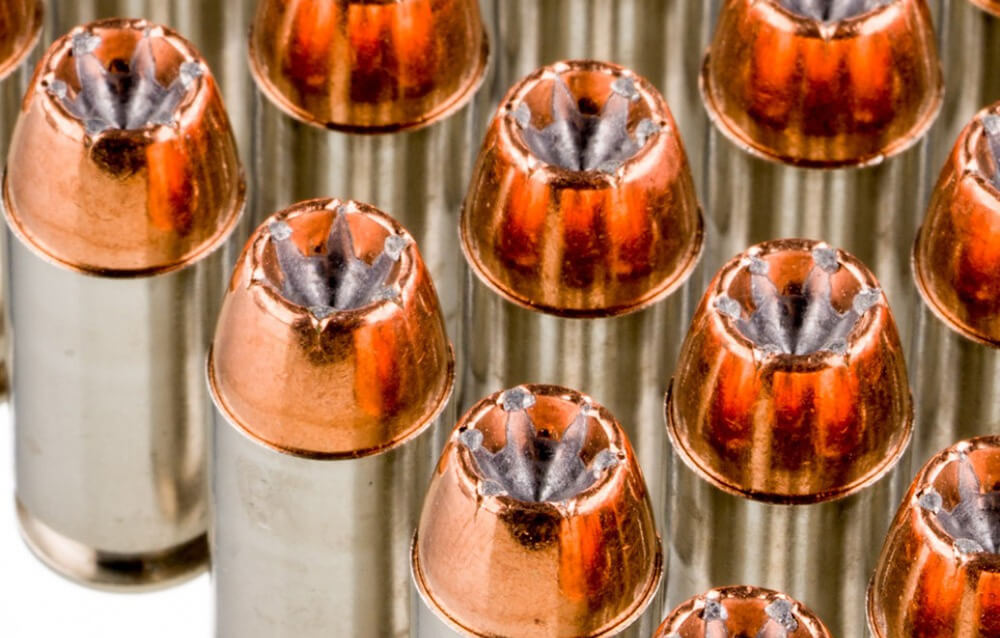
The bullet, a special hollow point designed by Speer, bonds the core to the jacket. This aids in penetration, especially barrier penetration. The bullets stay together, unlike others that shed their jacket and don’t penetrate as far because of the separation of jacket and core.
The round was designed to meet the FBI’s penetration standard: 12 inches minimum, 18 inches maximum. It was also designed to go through car windshields, a job it performs admirably. If you want to carry what the cops carry, give this a try. It also comes in a 180-grain version if you want a heavier bullet.
Best .40 S&W Ammo: Federal 180-Grain Hydra-Shok JHP
Specs: 1000 fps, 400 ft/lbs Energy
The Federal Hydra-Shok uses a unique bullet. It doesn’t have the typical hollow point cup. Instead, it has a central post that aids in controlling expansion.
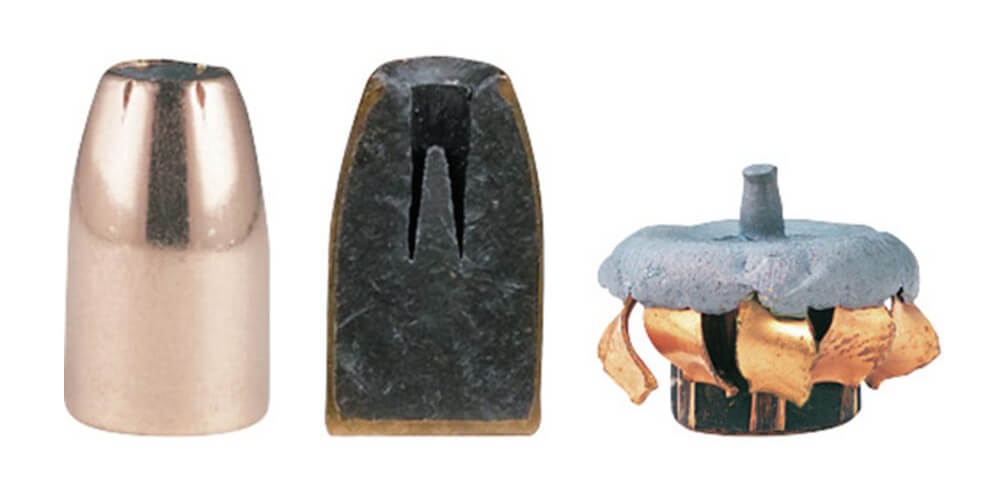
The post partially fills the cavity, while a scored jacket helps the jacket peel back and the bullet upset when it hits the target. However, it penetrates as it should, meeting the FBI’s penetration protocol.
If you are concerned about penetration (as you might be in the winter where folks wear heavy coats), then this Federal round should ease your mind a bit.
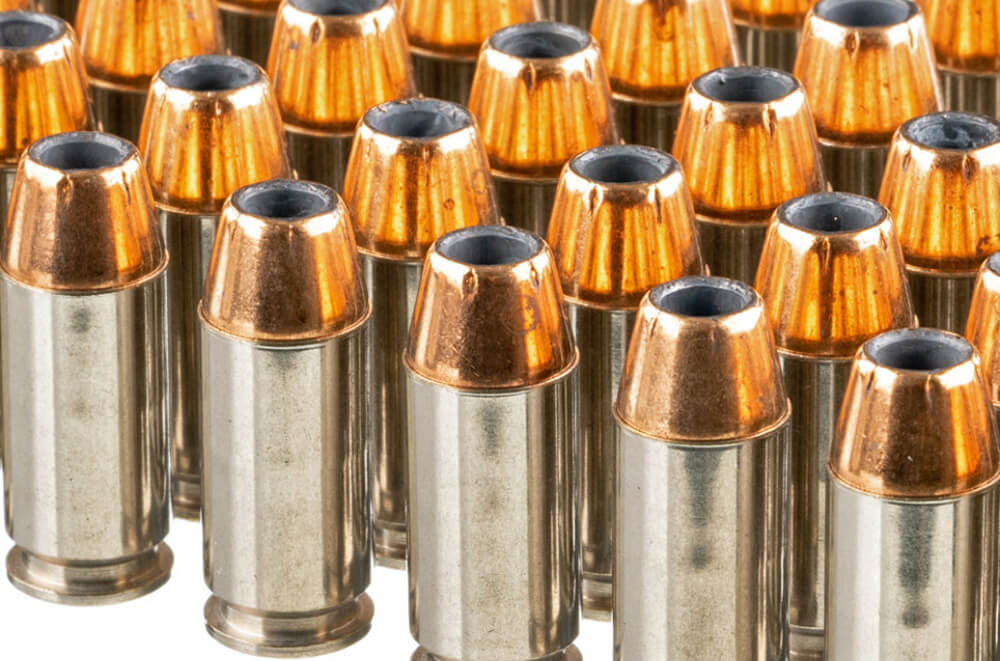
You can buy it in boxes of 50, or in bulk of 1000 rounds and the price per round is the same. Let’s look at another Federal round popular with law enforcement agencies.
Specs: 1160 fps, 463 ft/lbs energy
The Federal HST is one of the more popular issue rounds for LE agencies. With its pre-skived jacket that aids in producing the flower-petal effect that good hollow points are known for, this round tends to cause a large permanent wound cavity.
A temporary wound cavity causes only temporary damage, as tissue tends to bounce back after the initial shock. This round meets the FBI’s protocols, uses a nickel-plated case, and is reloadable.
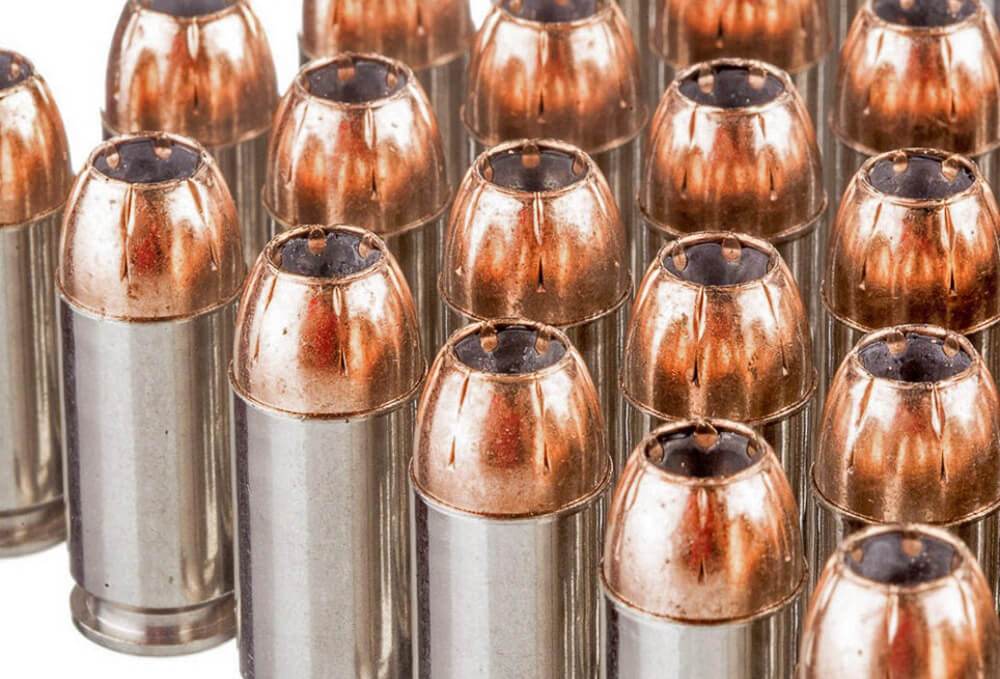
Here’s a ballistic gel test of this round, courtesy of Lucky Gunner.
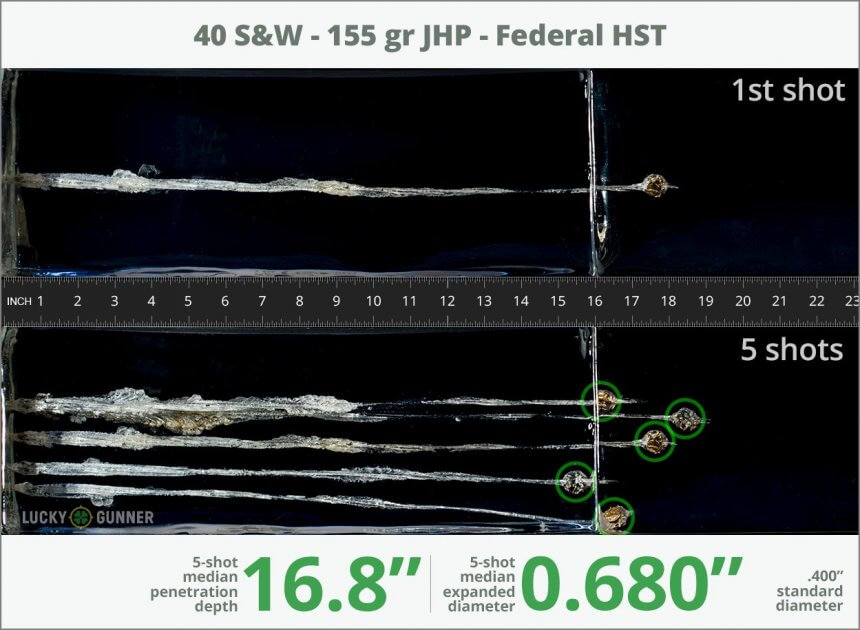
As you can see, this round has plenty of penetration, couple that with great expansion, and you have a winner.
BONUS OFFER: Get your free shooting range targets to print at home!
Get your free targets to print at home!
Best .40 S&W Ammo: Winchester PDX-1 Defender 180-Grain JHP
Specs: 1000 fps, energy N/A
The Winchester PDX-1 Defender has a pretty good recommendation going for it. Its 9mm cousin was chosen as the FBI’s main service load. This round, the most expensive of all we’ve looked at, uses a bonded-core bullet that retains its weight as it penetrates and expands. Let’s look at a gel test of this round, courtesy of Lucky Gunner.
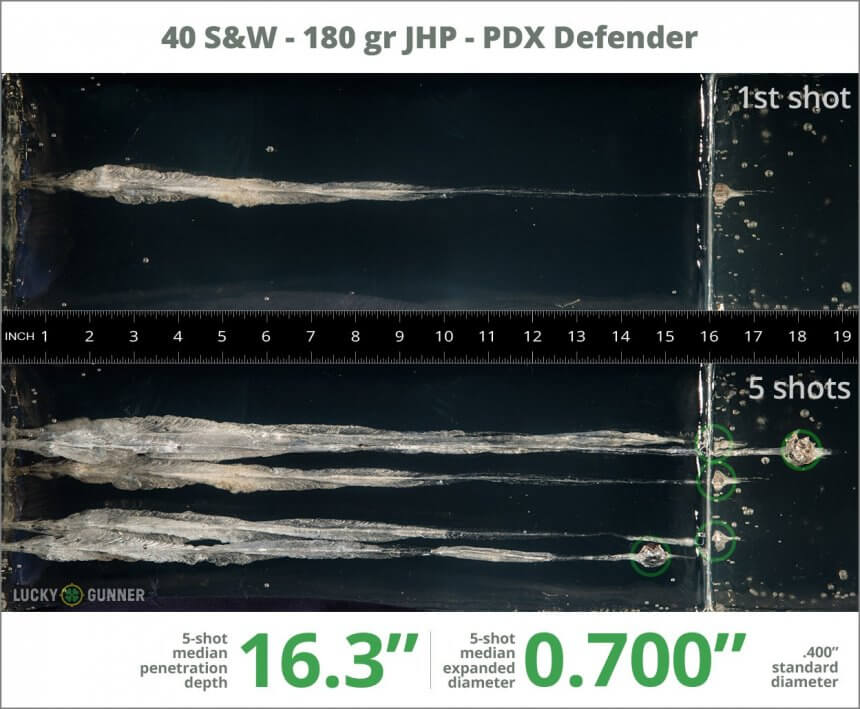
As you can see, the penetration is just about right where the FBI wants it — four inches past the minimum-12-inch penetration depth and 2 inches shy of the maximum-penetration depth of 18 inches. Its expansion is also impressive.
A lot of folks may balk at paying over $1 a round, but this ammo is considered one of the very best rounds out there for personal defense. It is accurate, feeds and extracts reliably, and tends to get the job done at the terminal end.
Remember, if you buy one box of twenty, you can buy matching practice ammo like we discussed above. I would think two or three boxes of this ammo, coupled with plenty of practice ammo, would suffice. Just make sure that both types are accurate and reliable in your gun.
The whole point of practicing with ammo similar to what you carry is familiarization. Recoil, sight acquisition, handling, muzzle blast, and flash. All these factors need to be similar between both types of your ammo. Once you’ve figured that out, the PDX-1 Defender might be a carry round for you. Let me know below what you think about this round.
Conclusion
I’ve tried to look at some of the most popular ammo for both practice and self-defense. You may have a different brand or type of ammo that works well for you. Experiment to find the right ammo and practice. Happy shooting, and be safe.




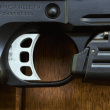
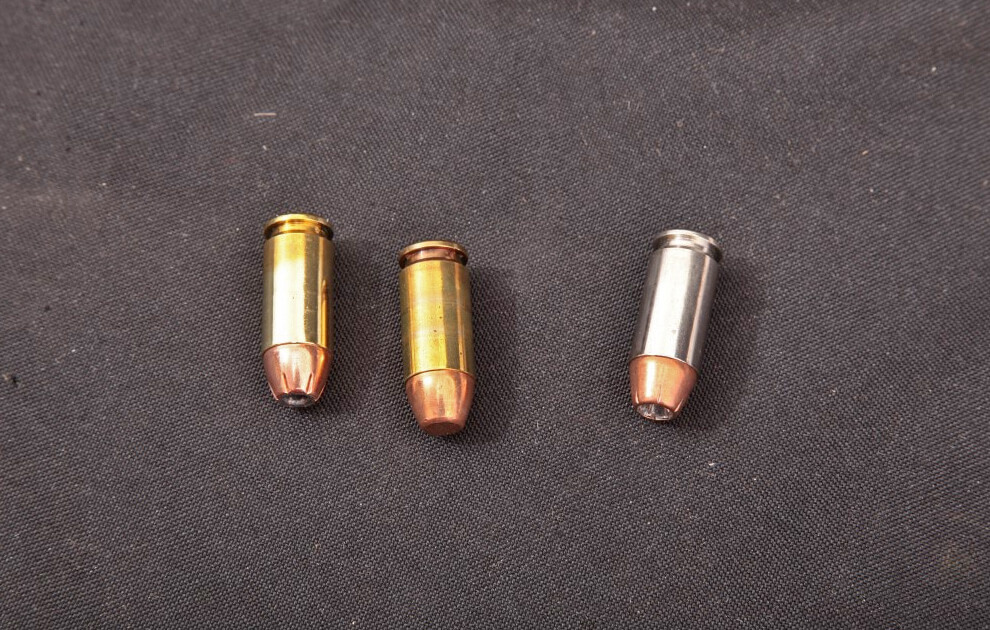
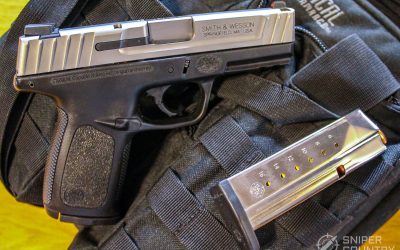

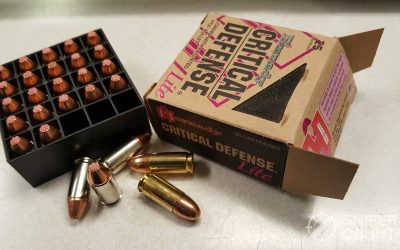
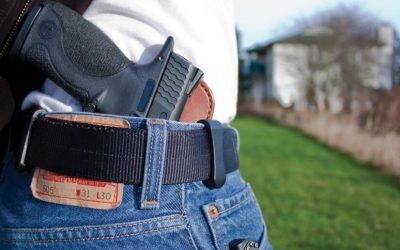
![9mm Glock Models [Ultimate Guide]](https://www.snipercountry.com/wp-content/uploads/2018/10/Glock-17-vs-Glock-19-vs-Glock-26-vs-Glock-41-vs-Glock-43-WM-400x250.jpg)
![Handgun Caliber Chart [2025 Ultimate Guide]](https://www.snipercountry.com/wp-content/uploads/2018/10/Handgun-Caliber-Comparison-400x250.jpg)
![Rifle Calibers [Ultimate Guide]](https://www.snipercountry.com/wp-content/uploads/2018/12/Header-1900-400x250.jpg)

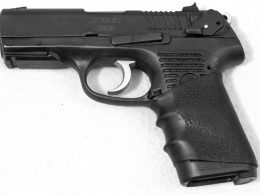
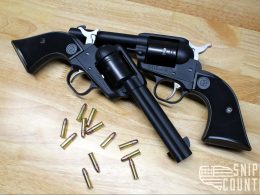
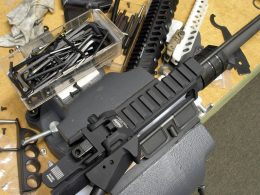
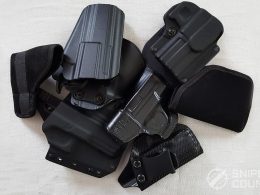

Another very impressive article, Mike. I always appreciate your efforts. Thanks so much. A bit more perspective about the Miami-Dade FBI five minute firefight on 11 April, 1986. The two bank-robbing homicidal maniacs they were pursuing were William Matix and Michael Lee Platt. The latter was a veteran who had served as an Army Ranger. Several involved FBI agents were armed with 9mm semi-autos (Ben Grogan, Jerry Dove, who were both killed, and Ron Risner) while their colleagues (Gordon McNeill, Jake Hanlon, Eddie Mireles, and Gil Orrantia) carried .357 magnum six-shot revolvers, and in the case or Mireles, also a 12 gauge shotgun. One agent (Richard Manauzzi) carried a six-shot .38 Special revolver. During the intense firefight, Jerry Dove hit Michael Lee Platt (who was armed with a Ruger Mini 14 firing 5.56 X 45mm rounds) with a 115 grain Winchester JHP 9mm as Platt attempted to extract himself from the pinned-in stolen Monte Carlo in which he and Bill Matix were driving. The bullet severed the brachial artery in Platt’s right arm, punctured his right lung causing it to collapse, but stopped an inch from his heart. The wound was mortal, but not immediately disabling. Platt continued engaging the agents with the Ruger Mini 14 and wound up executing Jerry Dove and Ben Grogan,, as well as seriously wounding Hanlon, McNeill, and Mireles. Platt was hit a total of 12 times, and died at the scene (as did Matix, who was hit 6 times). The shots that killed Platt and Matix were delivered by Ed Mireles, who was early in the engagement seriously wounded in the left arm by Platt. He pulled his .357 magnum revolver loaded with .38 Special +P rounds (as were all the ammo in the FBI’s .357 magnum revolvers during that firefight) and hit both Matix (3 times) and Platt (2 times) at close range as they sat in the front seat of an FBI vehicle while attempting to escape. Mireles’ shots finally ended the carnage. After the fight, the intense scrutiny was on the 9mm Winchester 115 grain JHP that hit Platt, but did not immediately disable him. The 9mm round performed exactly as it was designed to do. But the firefight resulted in the FBI establishing ballistic tests that all rounds used by the agency had to pass. Initially, they decided to transition from 9mm to 10mm. However, the 10mm pistols were large, heavy, with stout recoil and many agents could not handle them. The FBI then requested a necked down version of the 10mm which became the .40 S&W. The 10mm is the most powerful mainstream semi-auto cartridge in production, but the Bureau opted for the .40 S&W. I find it interesting that the recently the Bureau, as well as many law enforcement departments throughout the country, are now moving back to the 9mm (.355 caliber) for their duty weapons. One other observation. If I’m a LEO carrying a .357 magnum revolver in pursuit of two homicidal maniacs, it is going to be loaded with full-house .357 magnum loads, not .38 Special +P. And there is going to be a rifle or two in the car.
John, Great contribution. I’d read, in some detail, about that incident but didn’t want to go overboard describing it in my short article. i’m glad you filled in the blanks-thanks for writing!
I was right there with you thru your recap of that shoot-out, right up until you loaded your gun with .357 magnum. FBI policy, (just like my dept’s policy) stated .38 +P as our ONLY approved round.
Well, we know how things happen. I was involved in a shooting that was justified in every way but one. My weapon was loaded with .357’s in the first two cylinders and the rest were .38+P’s. Why? Because we all “knew” .38’s bounced off winshields. I only fired twice. Both were hits on a running, closing man. He fell, got up just as quick and I chased him on foot over 250 yards (he was now running AWAY from me) before he fell down and stayed down. He was administered Narcan at the hospital and refused to believe he was shot. Twice.
End result was, the shooting was justified but I received a written reprimand for having those .357’s in the weapon.
Keep in mind, this was prior to the Miami Dade FBI shoot-out. I’m sure, if done today, I would have been arrested, charged with violating the bad guy’s rights, tried, convicted and sent to prison.
For you to state what you would do, against policy, in these times is at the very least, irresponsible. I’m sure there are young men, new LEO’s, that might read that and choose to do the same, not realizing the scope of the consequences.
Just my view from a slightly different perspective.
Thanks for your perspective. I had no knowledge that .357 magnum ammunition for .357 magnum revolvers was proscribed at the time of the Miami-Dade Shootout (4/11/86). They way I view it is that both Matix and Platt were known killers. They were the subject of ongoing efforts to capture them. The 8 FBI agents that did the felony car stop on Matix (who was driving the stolen Monte Carlo) and Platt at 9:30am on April 11, 1986 were woefully outgunned. Indeed, the fight really centered around Platt with his Ruger Mini 14 rifle against 7 agents (Manauzzi was never in the fight after he lost his .38 Special revolver in the car stop, and Matix, armed with a 12 gauge shotgun, was a non-factor). Platt almost won. Other than the 12 gauge Ed Mireles had, the most powerful cartridge the agents fielded was the .38 +P and the 9mm. Both a far cry from the power of a full-house .357 mag. Under the circumstances, I think I’d have asked for forgiveness rather than permission for putting .357 magnum loads in my service revolver. I also would have been carrying at least 4 speed-loaders. Given the lethal nature of the encounter, and the ruthlessness of the suspects, I can’t imagine the agents being cashiered afterward for carrying .357 magnum rounds in their revolvers. Of course in hindsight, an M-16 in each agent’s car would have been a much better alternative than any handgun, including .357, .41, and .44 magnum revolvers.
John, thanks for your insightful comments!
Officer Obie (Arlo Guthrie would love that), first, thanks for your service. Secondly, it’s good to hear from someone who has actually “been there and done that.” I truly appreciate your comments and viewpoint, and I can see your point – you have to do what your department tells you. I think that what John might have been saying is that, if there were no limits on what you could carry, .357 would be better than .39 +P. You knew this, but you were limited to the .38 round officially. I also am glad that you weren’t hurt or further disciplined. In your description of the incident, you said the bad guy ran about 250 yards after taking two .357 bullets. That’s pretty interesting in and of itself. Again, glad you’re here today to comment-thanks for writing! Any other LEOs out there have a similar experience?
Good info Mike, Thanks for clearing up some misconceptions about the .40 SW
Darrell, glad to help. It’s always good to know where cartridges come from, a little history. Thanks for writing!
A great article. Prompted me to get a couple of boxes and give them a try. I tell ‘ya the Winchester PDX-1 Defender is one helluva round. I run cheap 180 fmj for practice.and used gold dots for EDC. First off, it was the larger wound channel that sold me.
Not to be gruesome , but what we really mean with the euphemism “stopping power” is a round that will carve a tunnel into a person’s body and hopefully vital organ and pulverize it so he drops dead.. Or wing him and rips off this arm at the shoulder like disjointing a turkey. Also like the casing.
Dion, you certainly are good with imagery! You sure make your point known. I think “stopping power”, if it can be defined at all, is simply the ability to make an attacker stop dead in his or her tracks, ceasing the attack. You don’t necessarily have to kill someone to do that – a hit to a nerve center or major organ should go a long way in stopping an attack. At least that’s what some of the studies I’ve seen on the subject have shown. I’m glad you like the PDX-1 Defender round – it’s a proven performer. Thanks for writing!
“the heavier bullet will (most of the time) strike higher on the target than the lighter one. Why? Because the heavier bullet tends to generate more recoil which lifts the barrel higher than the lighter bullet will” I dont take it. It would mean 45 cal. would hit the roof. Anyway, I like your writing style and sense of detail. Finally I know where the PMC cartridges has origin..
Tomas, thanks for your kind words. I do try to get into details, maybe too much at times! Thanks for writing.
You missed the point. The point is that the recoil impulse while the bullet is traveling down the barrel is greater for a heavier bullet, and exerted over a longer period of travel. That is what raises the barrel axis COMPARED TO A LIGHTER BULLET IN THE SAME GUN. So a 230 grain ball in a .45 will raise the angle of the barrel axis more than a 165 grain, for example, fired in that same gun. It does NOT mean that a heavier bullet in one gun hits higher than a light bullet in another. The gun is sighted in with a bullet of given weight, which strikes the X on the target; a lighter bullet in that gun, with that sight adjustment, will strike lower, and a heavier, higher.
George, you are right. Not sure what I was thinking there. I was just going on my memories of what my personal experiences have shown over the the years. I appreciate your comments – thanks for writing!
I’ve used Winchester Ranger 180 grain Hollow Point in my .40, and have read good things about its expansion, penetration, and overall effectiveness. It is labeled “Law Enforcement Ammunition” for a reason. While I hope I am never in a position to shoot someone to kill, I would prefer that of the two of us, the one dead after the encounter would not be me. Reviewing many accounts of gunfire exchanges, however, has convinced me of one dependable fact: in almost every case short of a direct, disabling hit to the central nervous system – brain, spine – the result of a hit to center mass, regardless of the caliber, velocity, or type of bullet (short of a .50 BMG) fired from a handgun is: nothing. No effect.
That is even true of many rifle cartridges. In almost all cases, the person hit by the bullet is largely unaffected until blood pressure drops from internal damage to a level sufficient to cause unconsciousness or inability to continue with an attack. And that takes 10 to 16 seconds, during which time that person can inflict severe damage on you in response; count it off, and think about it – bullets being fired back at you for 15 seconds or more. Not exactly what you’d hope for after a hit with a .40 center mass to the chest.
Think of the stories of deer or other animals hit well by a rifle round that go on to run for that length of time, covering a football field before collapsing. How long does it take to run 100 yards? Same thing. The reason for high-capacity magazines is self-explanatory; the reason to keep shooting as a deterrent to ongoing attack, likewise. You also cannot make the assumption that once an attacker is down, that he or she will stay down; there are plenty of videos of shot perps getting back up and recommencing fire.
I think the point of the above is that after you have exhausted all reasonable means of avoiding the conflict in the first place – including running like the dickens and hiding if possible – you should use an effective round that you can handle accurately, keep shooting, and get out of Dodge and to a protected area as soon as humanly possible afterwards. A handgun is a mediocre man-stopper, no matter how you slice it; there’s no shortage of evidence that’s true, even for well-placed impacts. And well-placed impacts are rare, indeed, when you are charged with adrenaline and facing (an) armed assailant(s).
Most police shooting stats indicate 2 to 3 impacts per 5 shots fired, and that’s at close range. The impacts in question are hits anywhere on the perp’s body – not perfectly-placed head shots. If that’s what a trained policeman, gun drawn at the ready, anticipating conflict, and often times with backup, can achieve ON AVERAGE, prudence would dictate a very different attitude towards deciding when YOU are safe if ever caught in a gunfight. Spare magazines suddenly seem less of a luxury, no?
George, you make some good points. I am no expert on civilian-involved shootings, but what you say makes sense. I think that the ability to carry more rounds with you is at least partly the reason that small, compact semi-autos are so hard to find right now…folks want more than the 5 or 6 rounds a revolver provides. My gun shop owner buddy Duane says he just can’t get some brands of compact semi-autos right now – they’re too popular with beginning shooters who’ve not bought a gun before the current situation and believe that the compact semiauto is what they need. I appreciate hearing your viewpoints – thanks for writing!
Just bought a GP-100 Match Champion in 10MM. I intend to use it under the authority of a Wilderness Permit. We have Black and big Brown bears that at times can be a nuisance in the worse way, At present I am testing both .40 cal loads for practice and 10MM rounds to carry. My concerns are with the primers I intend to use. I will be using 200 gr hard cast handloads. The Federal primers in the 40 cal are most certainly the most reliable using moon clips un the gun early on. I have not tested enough 10MM rounds, with and without moon clips to make a comment at this point.
The 10MM round is as powerful a round that I can use and shoot with speed accurately. That is why I have not moved to the 44mag, I also intend to carry a 12 gauge Mossberg Defender loaded with slugs as my primary.
Thanks Mike for the excellent write up.
Take Care
Bob
Bob, sounds like you’re good to go! A 12-gauge and a 10mm shooting heavy-for-caliber hard-cast bullets ought to be good for anything roaming our continent, I would think. Are you worried that the primers will not go off when you pull the trigger? I would think that you should be OK, given that Federal primers tend to be very reliable, at least in my experience. Take care, and keep us posted – thanks for writing!
The .40 has largely taken a step back in LE use and overall popularity in recent years, primarily I believe to the improvements to the 9mm rounds. My dept is one of the outliers that still issues an M&P in .40 caliber as our duty pistol. Despite the large shift away from .40 back to 9mm, the rounds efficacy has never been in question. As an admitted 10mm guy, I have on occasion referred to the .40 s&w as the .40 short and weak, but only in jest. It has been a solid performer or years for law enforcement and citizens for self defense and will continue to do so. When looking at the best performing ammunitions in various calibers…the federal hst and speer gold dot’s seem to be ever present in nearly any caliber discussed. Thanks for another great article.
I feel comfortable using HST in all of my calibers.
Nunya, thanks a lot for your message! God be with you.